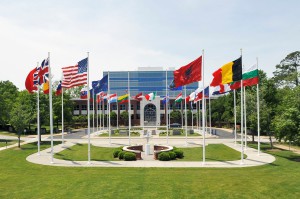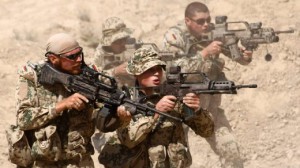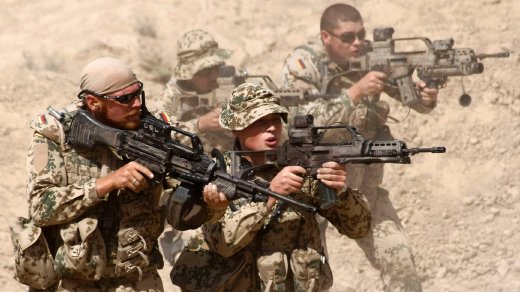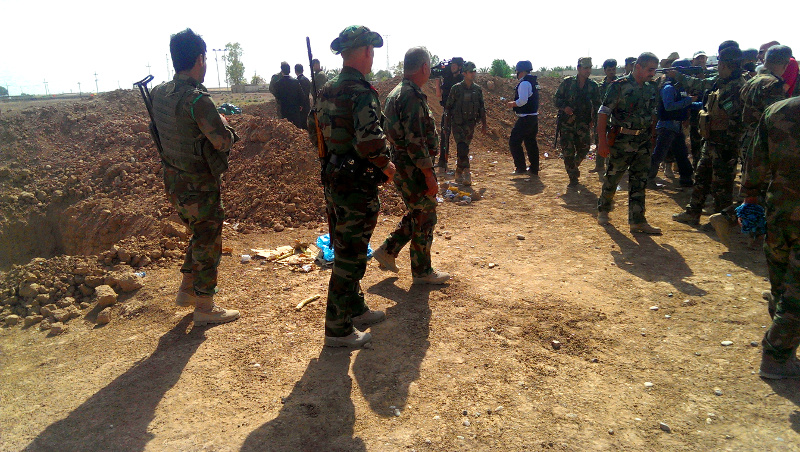
The just completed Wales Summit 2014 could not have come at a more pressing time. The alarming speed at which Russia annexed the Crimea and mounting evidence of Russian military involvement in eastern Ukraine has frightened many European NATO member states and prompted increased NATO deployments in Eastern Europe.
In response to Russia’s actions, NATO’s Secretary General Anders Fogh Rasmussen has proposed the creation of a Rapid Response Force (RRF) to the officials at the NATO Summit Wales 2014. This multinational force would be placed on permanent high-alert and be able to deploy to the area of operations within 48 hours. The RRF’s equipment would be pre-positioned at staging bases throughout Europe, allowing troops to meet up with their equipment at NATO logistical hubs and deploy quickly. It would have the strength of a brigade, approximately 4,000 troops, that would be drawn from member countries on a rotational basis. Mr. Rasmussen also stated that this force would be trained to counter both regular and emerging threats to NATO member state security, like cyberwarfare and shadow warfare tactics, with a full complement of NATO naval, air, and special operations support.
The RRF is designed to be the spearhead of the larger NATO Response Force (NRF). The NRF consists of troops from all member states that serve on a twelve month rotational basis and are able to deploy anywhere in the world in five days. It is structured into three separate parts (the creation of the RRF would add a fourth part): a command and control section, the Immediate Response force (which consists of 13,000 troops at a high level of readiness), and the Response Forces pool (which can supplement the Immediate Response Force if needed).
First conceptualized in 2002, the NRF is an extremely flexible force that serves two purposes: collective defence and crisis response. The NRF is NATO’s primary method of collective defence and deterrence, meaning that if the sovereignty of a NATO country is violated and Article 5 is invoked, the Immediate Response Force of the NRF would be deployed to ensure that the invaded country does not face its foe alone. This harkens back to NATO’s Cold War-era purpose, which was defending Western Europe from a possible Soviet invasion. The other important purpose of the NRF is crisis response. The NRF responds to crises throughout the world, from delivering aid to the victims of Hurricane Katrina in 2005 to conducting live-fire exercises in Europe to demonstrate NATO’s political will.

Despite a sound operational concept and force structure, the long-term effectiveness of the NRF is on shaky ground due to two factors. One is the NATO-led International Security Assistance Force (ISAF) mission in Afghanistan. During the Afghanistan conflict, some NATO countries (including Canada) contributed greatly to the ISAF mission while others shirked their Alliance responsibilities. This meant that some NATO militaries were overburdened and could not contribute to the NRF as they were supposed to. In response to this issue, NATO made force contributions to the NRF voluntary and at the discretion of the member states. While this allows some member states to reorganize after the long mission in Afghanistan, it also allows for others to continue evading their treaty obligations.
This leads into the second factor: burden sharing. Of the 28 NATO member states, only four (the United Kingdom, Greece, the United States, and Estonia) reach the NATO target of spending 2% of their gross domestic product on defence, which has rendered most NATO militaries toothless. This in turn degrades the effectiveness of the NRF, putting the force’s long-term viability in doubt and creating tensions within NATO.
The addition of the RRF to the NRF’s force structure would allow the NRF to become an even more capable force for deterring aggression and responding to crises around the world. The challenges it faces, however, are daunting. Without a general commitment from Alliance members to increase military spending, the NRF could dwindle away and exacerbate concerns of free riding and burden sharing that have been rife within NATO for the past few years. Not addressing these concerns of free riding, especially now when facing an assertive Russia, could have dire consequences for the Alliance in the future.


